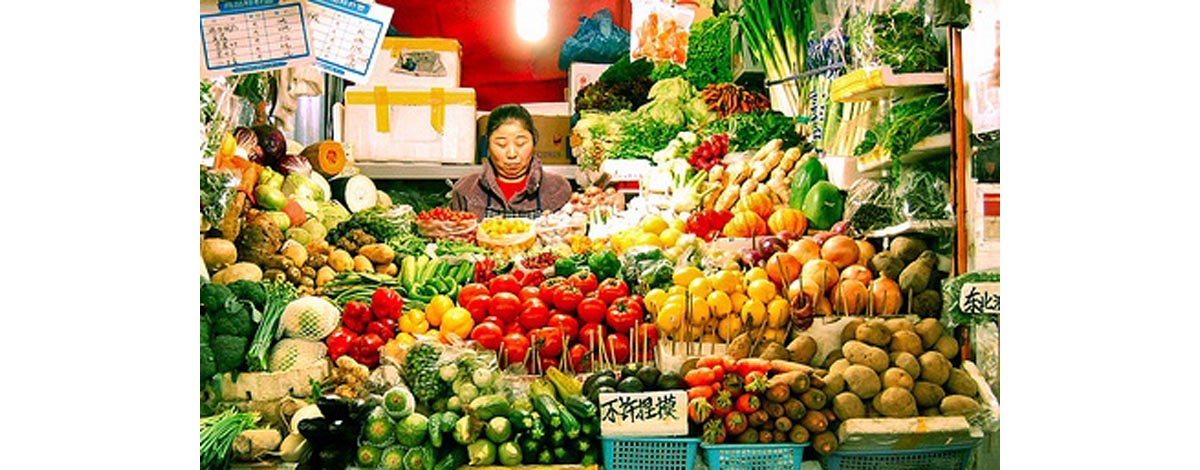For most women, the symptoms associated with PMS start in their teens or early twenties, and can continue up to their thirties and forties. So—do you just have to put up with it or are there, for example, foods to eat that can help minimize PMS?
It is estimated that 3 out of every 4 women experience some form of PMS (PreMenstrual Syndrome). For most women, the symptoms associated with PMS start in their teens or early twenties, and can continue up to their thirties and forties. For some women, these symptoms can continue into the perimenopausal phase of their lives!

These symptoms can include anxiety, irritability, emotional ups and downs and physical symptoms—such as joint and muscle pain, headaches (including migraines), fluid retention, breast tenderness, acne and either constipation or diarrhea.
So—do you just have to “put up with it” or are there, for example, foods to eat that can help minimize PMS. Yes! There are! First off, as a tip, eat smaller meals throughout the day—this is sometimes called “grazing”. You want to avoid that feeling of fullness. It can also help if you have a problem with overeating—if you are never really hungry, that tendency to overeat may be avoided! You should also avoid sugary foods, caffeine and alcohol—they tend to make the symptoms of PMS worse.
So—do you just have to “put up with it” or are there, for example, foods to eat that can help minimize PMS. Yes! There are! First off, as a tip, eat smaller meals throughout the day—this is sometimes called “grazing”. You want to avoid that feeling of fullness. It can also help if you have a problem with overeating—if you are never really hungry, that tendency to overeat may be avoided! You should also avoid sugary foods, caffeine and alcohol—they tend to make the symptoms of PMS worse.
Read more: Signs and symptoms of menstruation
Another general tip is to make sure you are drinking plenty of water! It may seem strange, but very often drinking enough water can reduce the feeling and the symptoms of swelling associated with PMS. It may have something to do with flushing metabolic by-products and toxins out of your system, but drinking enough water (usually considered 8-10 glasses a day) can help!
One rule of thumb is to drink, in ounces, half of your weight in pounds. So, if you weigh 150 pounds, drink a total of 75 ounces of water. If you weigh yourself in kilograms, drink the same number of ounces of water—so, if you weigh 70 kg, drink about 70 ounces of water (or about 2 liters).
Foods rich in B-vitamins, fiber, magnesium and potassium will deal with your PMS
Folate is a B vitamin that is found in leafy vegetables such as spinach, parsley, beets and beet greens, turnip and mustard greens. It is also found in asparagus, romaine lettuce, lentils and in calf's liver. Other B vitamins that are important in helping the symptoms of PMS are B12, and B6—sources of these vitamins include liver, most meats, brown rice, fish, wheat germ, whole grain cereals (such as oats, rye and buckwheat), and soybeans. Vitamin B6 is often particularly recommended for women with PMS. Some of the best sources of B6 are tuna, bananas, poultry and fish. Other good sources of vitamin B6 are turnip greens, bell peppers and spinach.

So, increase the amount of B vitamins in your diet by “mixing” and “matching” these foods—add nuts and seeds to your greens, bake an apple with some cinnamon or top off your beans with bell peppers. Snack on nuts throughout the day and have a banana or apple. Don’t forget to keep your water handy!
You also will want to make sure you have regular bowel movements—this is because the mechanical pressure can increase the feelings of discomfort, and you definitely want to avoid that! Fiber rich foods are the “ticket” here! Some of the most fiber rich foods also are high in B vitamins—so you are getting more “bang for your buck” as well! Some of the foods that are richest in fiber are whole wheat, brown rice, oat bran, barley, peas, beans and nuts. Fiber is also found in the skins of fruits such as apples, plums, pears and peaches and in vegetables such as celery, bok choy, asparagus and leafy greens (mustard greens, kale, swiss chard and spinach).
Foods rich in magnesium and potassium
Many of these foods already listed will also supply you with the essential minerals such as magnesium, calcium and potassium that can help with PMS as well. The more you choose to eat from these nutritious foods, the better you will feel throughout your cycle!
The best foods for minerals are whole grain brans, seeds such as flax, sunflower and sesame, brazil nuts, leafy green vegetables ...and….guess what…chocolate! Chocolate bars or chocolate ice cream is not what we are talking about here—its cocoa powder! Cocoa powder is packed with magnesium—one serving (86g, or 1 cup) has 107% of your Daily Value (DV) of magnesium, 37% DV potassium, 11%DV of calcium, 39% DV of zinc and 66%DV of iron. Cocoa also contains lots of antioxidants which can also help with PMS. Yes, chocolate contains fats—mainly omega-6 fats and saturated fats, so it’s not perfect—but, this IS something to be said for the occasional comfort food. Just make sure you keep it the occasional comfort food!
Again, stay away from the sugars—they can make the symptoms of PMS worse by raising your blood sugar levels. When those blood sugars drop…and they will, those symptoms of anxiety, irritability, inability to concentrate….those may very well get worse and you may begin to crave the sugar—because for awhile, it might make you feel better. Remember that in the longer run, it doesn’t, because often those “lows” are really low!
- Photo courtesy of albertbredenhann on Flickr: www.flickr.com/photos/albertbredenhann/2205571765
- Photo courtesy of foxxyz on Flickr: www.flickr.com/photos/foxxyz/3250269186

